
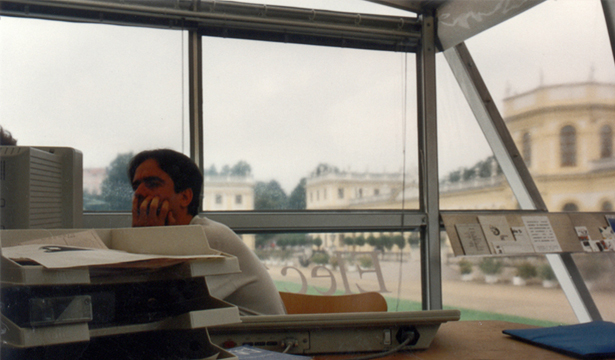
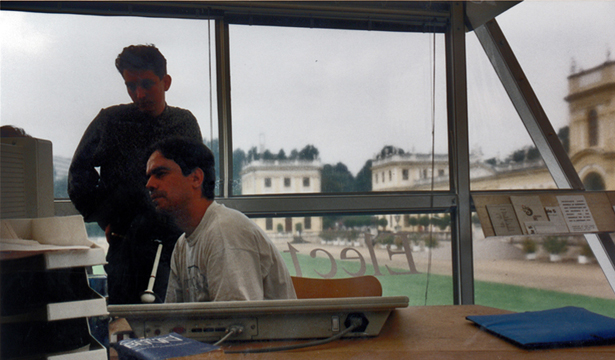
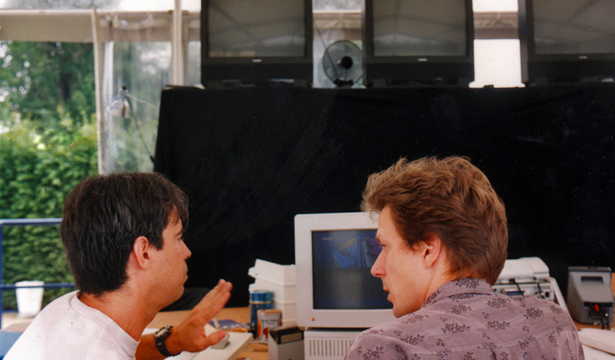
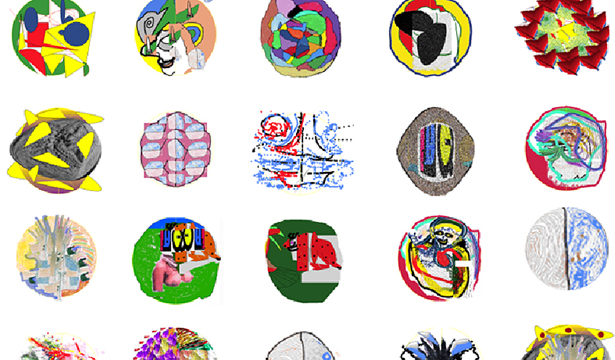
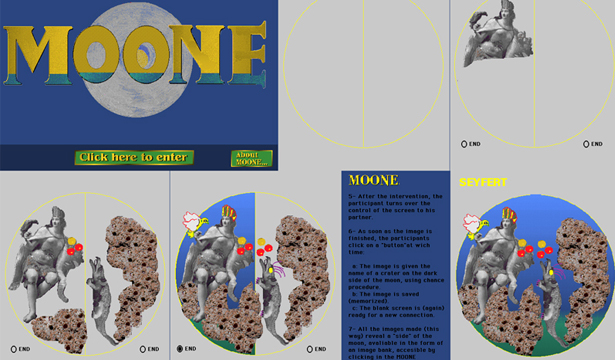
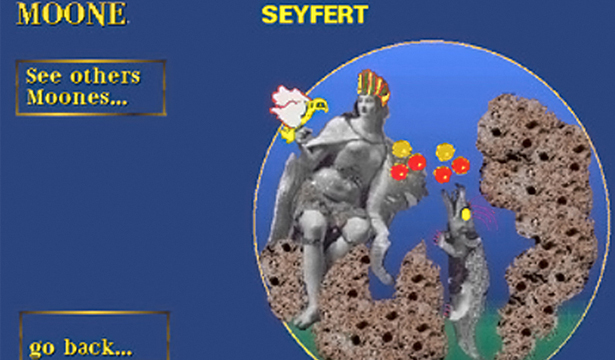
Mauris sit amet tortor.9
Mauris sit amet tortor.6
Mauris sit amet tortor.7
Mauris sit amet tortor.8
Mauris sit amet tortor.10
Mauris sit amet tortor.11
Mauris sit amet tortor.12
<
>
Moone (1992)
Using the principle of shared screen via ISDN, you are invited to take place beside your partner and construct with him/her a hybrid image in real time, without ever touching or (even) seeing him/her.
This ambiguity is at the heart of the project. An ephemeral relationship is created in which growth and composition depend on the other and on the dynamics of the exchange.Breathpoetry, a constant alternation of poles of representation, transformation of shadow into pixel-light.
more...
Procedure: 1- A space (circle) divided in two appears on the screen. 2- The two participants work alternately, one on the left side, the other on the right. 3- Each participant's work consists of making whatever he wants on his half of the screen (drawing, photo,..., any kind of digital image, taking into account the other's participation, thus establishing an dialogue in images. 4- A participant has access to only one half of the sphere. He can possibly take elements from the other side (for example by copying and pasting) but he can't intervene graphically in the composition of the other half. 5- After the intervention, the participant turns over the control of the screen to his partner. 6- As soon as the image is finished, the participants click on a "button" at which time: a: The center line disappears. b: The image is given the name of a crater on the dark side of the moon, using chance procedure. c: The image is saved (memorized). d: The image disappears. e: The blank screen is (again) ready for a new connection. 7- All the images made (this way) reveal a dark side of the moon, available in the form of an image bank, accessible by clicking on a "point" of the moon map created.
This project was developed during the exhibition "Machines à Communiquer" in the "Atelier des Réseaux" at Cité de la Science et de l'Industrie La Villette - Paris, with the collaboration of "Café Electronique" also at La Villette.
The first images built together were made the 4th of July 1992 between Gilbertto Prado at "Café Electronique" (Paris) and Hermann Keldenich at Electronic Cafe (Kassel - Germany), during the IX Documenta. Other exchanges followed on the 5, 17, 18
MOONE
Vídeo 1
Vídeo depoimento
Video 2
youtube: https://youtu.be/tn1E2xD9Wg8
vimeo: https://vimeo.com/25877211
Links
PRADO, Gilbertto. Arte telemática: dos intercâmbios pontuais aos ambientes virtuais multiusuário, Itaú Cultural, São Paulo, 2003.
Printed
Art-Réseaux. Karen O'Rourke (org.), Editions du C.E.R.A.P. (Centre d'Etudes et de Recherches en Arts Plastiques - Université de Paris I Panthéon - Sorbonne), Paris, França, 1992.
PLAZA, Julio e TAVARES, Monica. Processos Criativos com Meios Eletrônicos: Poéticas Digitais, São Paulo, Editora Hucitec, 1998.